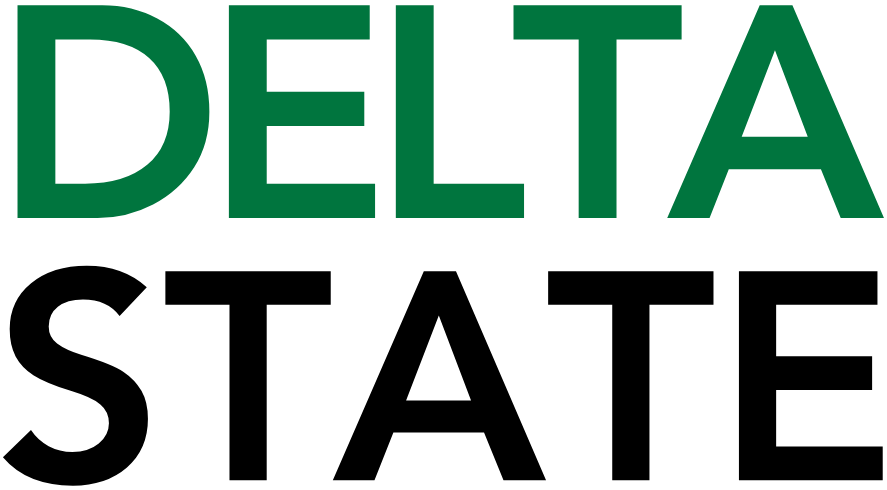Delta State University is committed to maintaining a healthful and safe work environment for students, faculty, staff, and visitors who use University facilities.
A broad network of departments, organizations, and individuals work together to maintain the health and safety of the University community including individual employees, managers and supervisors, the Student Health Services, the Physical Plant, and the University Police Department.
It is University policy that each dean, director, department chair, and supervisor be responsible for the safety performance in his or her respective unit. Everyone with supervisory responsibility is required to participate directly in the supervision of programs to assure that safe working conditions are maintained and that required training for accident prevention is provided. Faculty and staff are also directly responsible for their own safety and for the safety of students and employees under their supervision. Responsibility for safety can neither be transferred nor delegated.
Health & Safety Policy
Protecting the health and safety of employees, students, visitors, and the environment is of primary concern to Delta State University. DSU takes an active role in identifying hazards before injuries and illnesses occur. Delta State University will make every reasonable effort to promote, create, and maintain a safe and healthful environment through adherence to basic safety principles, sound management practices, and compliance with applicable federal, state, and local standards.
Inspections
To ensure that the university’s policy for a safe and healthy environment is carried out, periodic inspections are conducted of campus facilities. The goal is to reduce accidents and injuries by eliminating safety and health hazards and eliminate unsafe practices among employees by conducting annual inspections of all university facilities. Inspections also ensure compliance with OSHA, NFPA, NIH, CDC, EPA and applicable state and local codes. Certain high-risk areas, such as laboratories, may be inspected more frequently. Written reports listing the problems discovered and recommended corrective actions are sent to the Director of the Physical Plant. Typically, imminent hazards must be corrected immediately, serious hazards within 30 days and non-serious hazards within 60 days. Departments are expected to use their own funds to correct minor problems or seek a budget adjustment for more expensive undertakings. Inspections are conducted by the IHL Risk Management Office to ensure that deficiencies are corrected.
In addition to the formal inspections of laboratories, residence halls, academic and administrative buildings conducted by IHL, individual departments are strongly encouraged to establish their own periodic inspection schedule.
Written Safety Rules and Procedures
Written rules and regulations set standards for safe work practices, establish a basis for disciplinary actions, and demonstrate good intent and program control to regulatory agencies. Safety procedures have been written for employees.
Ensuring that employees and students receive proper safety training is an important function of the safety program. All DSU employees and students must be trained in the proper use of equipment and materials before using them. Deans, Department Chairs, and supervisors are responsible for ensuring that employees are adequately trained in safety practices. Professors are responsible for training students exposed to hazardous conditions.
Training is to be conducted when a new employee is hired or transferred to a new job, when new equipment is installed, new task is assigned, or any time a lack of employee knowledge or skill is creating accidents or hazards. Annual refresher or special training may also be required. For example, respirator use requires annual training and special training is required whenever respirators, procedures, or physical features change. Supervision is responsible for ensuring that employees possess the necessary knowledge and skills to safely operate machinery and equipment in their area.
Accident Investigations
The Human Resource Manager, in coordination with the Director of Facilities Management and appropriate supervisors, investigates work-related accidents and incidents, determines the causes, and recommends corrective actions to eliminate or minimize the potential reoccurrence of an accident. All employee accident reports are filed with the Human Resources Department and a copy of the First Report of Injury is sent to the Workers’ Compensation Provider (AMFED) for review.
Emphasis is placed on the importance of reporting all accidents and incidents to supervisors, whether or not they result in personal injuries or property damage. A “near miss” can alert a supervisor to a dangerous situation and allow for corrective action before a serious accident occurs. Accident investigations are based on fact-finding, not faultfinding.
Contractors and Vendors
Contractors are expected to abide by applicable federal and state regulations while on campus. Contractors must take steps to protect the health and safety of employees, students, and visitors while performing their work. Contractors must enforce safety rules among their employees and obey university safety rules. The contract between the university and a contractor contains safety compliance as an unalterable condition. DSU administration is responsible for enforcing compliance has the authority to shut down work that is deemed an imminent hazard.

